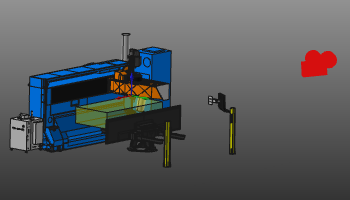|
Projection view
|
|
The way that users see the content of the 3D world is based on the principle of active cameras. The user looks through a camera's lens to see the 3D space. This 3D space is a fixed environment with its content of geometrical and other graphical objects. All viewing actions, like zooming or rotating, are generated by placing and moving the camera relative to these objects.
|
|
The projection view is the way that the camera lens sees the 3D space. In the Settings one can switch between the Orthographic view and the Perspective view.
|
|
With the orthographic view, or also known as orthogonal or parallel view, the view lines are orthogonal to the camera. With the perspective view, the view lines are captured in a view angle, with focus in the camera lens. This is more realistic than the orthogonal view and becomes very useful for viewing details in assemblies with many objects close to each other.
|
|
|
|
Camera
|
|
Each view in the 3D View will have one active camera. Thus, when the screen is split in multiple views, there are multiple cameras in use. In each view the other camera views are indicated with a camera object, that is directed accordingly the view direction.
|
|
|
|
|
When a camera has been attached to an object in one view and therefore blocks the free view manipulation, the camera object in the other views turns into red to highlight this attached state.
|
|

|
|
|